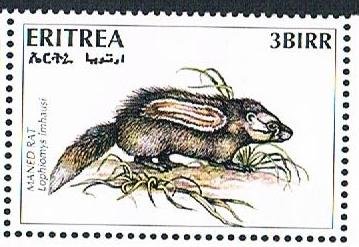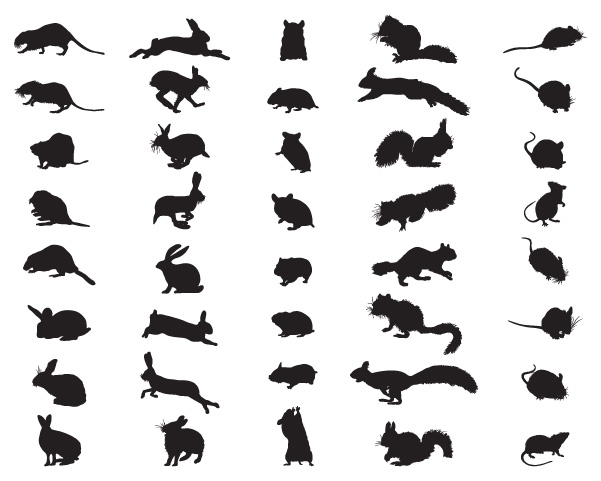Stamp: Maned Rat (Lophiomys imhausi) (Eritrea 1996)
Maned Rat (Lophiomys imhausi) (Eritrea 1996)
15 July (Eritrea ) within release Endangered Species goes into circulation Stamp Maned Rat (Lophiomys imhausi) face value 3 Ethiopian birr
| Stamp Maned Rat (Lophiomys imhausi) in catalogues | |
|---|---|
| Michel: | Mi: ER 82 |
| Stamp Number: | Sn: ER 260d |
| Stanley Gibbons: | Sg: ER 326 |
Stamp is horizontal format.
Also in the issue Endangered Species:
- Se-tenant - endangered animals of Eritrea face value 4*3;
- Mini Sheet - endangered animals of Eritrea face value 12*3;
- Stamp - Maned Rat (Lophiomys imhausi) face value 3;
- Stamp - Aardwolf (Proteles cristatus) face value 3;
- Stamp - Dugong (Dugong dugon) face value 3;
- Stamp - Green monkey (Cercopithecus aethiops) face value 3;
Stamp Maned Rat (Lophiomys imhausi) it reflects the thematic directions:
Animals are multicellular, eukaryotic organisms of the kingdom Animalia (also called Metazoa). All animals are motile, meaning they can move spontaneously and independently, at some point in their lives. Their body plan eventually becomes fixed as they develop, although some undergo a process of metamorphosis later on in their lives. All animals are heterotrophs: they must ingest other organisms or their products for sustenance.
Mammals are any vertebrates within the class Mammalia (/məˈmeɪli.ə/ from Latin mamma "breast"), a clade of endothermic amniotes distinguished from reptiles (including birds) by the possession of a neocortex (a region of the brain), hair, three middle ear bones and mammary glands. All female mammals nurse their young with milk, secreted from the mammary glands. Mammals include the largest animals on the planet, the great whales. The basic body type is a terrestrial quadruped, but some mammals are adapted for life at sea, in the air, in trees, underground or on two legs. The largest group of mammals, the placentals, have a placenta, which enables the feeding of the fetus during gestation. Mammals range in size from the 30–40 mm (1.2–1.6 in) bumblebee bat to the 30-meter (98 ft) blue whale. With the exception of the five species of monotreme (egg-laying mammals), all modern mammals give birth to live young. Most mammals, including the six most species-rich orders, belong to the placental group. The largest orders are the rodents, bats and Soricomorpha (shrews and allies). The next three biggest orders, depending on the biological classification scheme used, are the Primates (apes and monkeys), the Cetartiodactyla (whales and even-toed ungulates), and the Carnivora (cats, dogs, seals, and allies).
Rats are various medium-sized, long-tailed rodents. Species of rats are found throughout the order Rodentia, but stereotypical rats are found in the genus Rattus. Other rat genera include Neotoma (pack rats), Bandicota (bandicoot rats) and Dipodomys (kangaroo rats).
Rats are typically distinguished from mice by their size. Usually the common name of a large muroid rodent will include the word "rat", while a smaller muroid's name will include "mouse". The common terms rat and mouse are not taxonomically specific. There are 56 known species of rats in the world.
Rodents (from Latin rodere, 'to gnaw') are mammals of the order Rodentia (/roʊˈdɛnʃə/ roh-DEN-shə), which are characterized by a single pair of continuously growing incisors in each of the upper and lower jaws. About 40% of all mammal species are rodents. They are native to all major land masses except for Antarctica, and several oceanic islands, though they have subsequently been introduced to most of these land masses by human activity.




